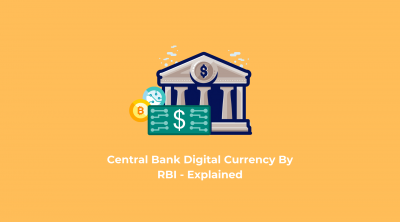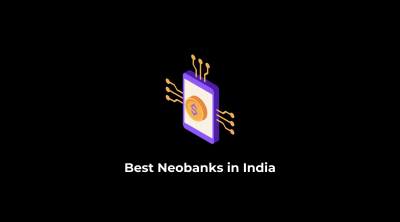Central Bank Digital Currencies (CBDCs) are a topic of much debate in recent times.
While many proponents argue that CBDCs have the potential to improve financial inclusion, reduce costs and increase efficiency, others are more skeptical of the potential consequences of CBDCs, particularly in developing countries like India.
However, before studying the negative consequences of CBDCs, I would want you to first understand what exactly are CBDCs and why are they gaining importance in today’s time.
What are CBDCs?
CBDCs are digital currencies issued by central banks, which are aimed at providing citizens with an alternative to traditional fiat currencies. The idea behind CBDCs is to provide a more secure and efficient payment system, while also increasing financial inclusion by making it easier for people to access digital financial services.
The reasons why countries are eventually moving towards adopting CBDCs are the features and benefits that it carries.
Following are some of the features of CBDCs that are noteworthy in this regard:
-
Improved Accessibility: CBDCs can be used through digital platforms and devices, making them accessible to a wider range of people, including those who may not have access to traditional banking services.
-
Enhanced Security: CBDCs use cryptography and other digital security measures to ensure that transactions are secure and free from fraud.
-
Increased Efficiency: CBDCs offer faster and more efficient transactions compared to traditional paper currency, as they can be transferred instantly and securely through digital platforms.
-
Traceability: CBDCs provide a record of all transactions, making it possible to track transactions and detect any fraudulent activity.
-
Real-time Settlement: CBDCs offer a real-time settlement of transactions, which means that payment can be made and received instantly.
-
Financial Inclusion: CBDCs have the potential to increase financial inclusion, by providing access to digital financial services to people who may not have access to traditional banking services.
-
Cost Savings: CBDCs can help reduce costs associated with printing, circulating, and processing physical currency, and can also lower transaction fees compared to traditional banking services.
-
Cross-border Payments: CBDCs can facilitate cross-border payments and remittances, making it easier for people to send and receive money from abroad.
Why CBDCs Can be a Cause of Concern for Indian Citizens?
I believe that despite the potential benefits, there are several serious risks associated with CBDCs, particularly in the context of India.
I want to shed light on some of the key reasons why CBDCs may not be suitable for Indian citizens and why policymakers should be cautious about embracing this new technology.
Financial Exclusion
One of the major concerns with CBDCs is that they may end up excluding a significant portion of the population, particularly those who are not technologically literate or have limited access to digital technologies.
I could only imagine the greater financial exclusion for large sections of the population, particularly in rural areas. In India, where a significant portion of the population still relies on cash transactions, this could lead to further marginalization and exacerbate existing inequalities.
Reduced Privacy
One of the biggest concerns with CBDCs is the impact they could have on privacy.
Since CBDCs are likely to be subject to government surveillance, this could undermine the privacy of citizens. This is particularly problematic in a country like India, where privacy concerns are already high due to a lack of strong data protection laws.
The government could potentially use the information collected from CBDC transactions to monitor the financial activities of citizens, which could have serious consequences for privacy and civil liberties.
Centralized Control
I couldn’t stress enough on this point. CBDCs are typically issued and controlled by central banks, which means that they are subject to centralized control.
This is a major concern in a country like India, where the government has a history of controlling the flow of information and restricting access to certain types of information.
If the government were to use CBDCs to control the flow of information or restrict access to certain types of transactions, this could have serious consequences.
Further, the government is in full control of this currency and it can stop the flow of CBDCs anytime. If you want to know how you can take a look at the demonetization that happened in late 2016. Well, this time, it would be a lot easier for the government with CBDCs.
Economic Instability
CBDCs could also lead to greater economic instability, as they may be subject to rapid fluctuations in value, particularly in developing countries with weaker economies.
This could have serious consequences for the stability of the financial system, particularly in times of crisis.
For example, if a large number of people were to suddenly lose confidence in the value of a CBDC, this could lead to a rapid decline in its value, with potentially serious consequences for the wider economy.
Security Concerns
Another major concern with CBDCs is the potential for cybercrime.
CBDCs could be vulnerable to hacking and other forms of cybercrime, which could result in the loss of funds for citizens. This could have serious consequences for the stability of the financial system and could undermine confidence in digital currencies.
In a country like India, where cybercrime is already a significant problem, this is another major concern.
Competition With the Banking System
CBDCs could also lead to competition with the existing banking system, which could result in the closure of many small and medium-sized banks. Even you know that not all banks have adequate infrastructural support to execute CBDCs.
This could lead to a further concentration of financial power in the hands of a few large institutions, with negative consequences for competition and financial stability.
Furthermore, if CBDCs were to become widely adopted, they could displace traditional currencies, which could result in significant losses for banks, particularly if they are not able to adapt quickly enough.
Lack of Regulation
Additionally, CBDCs may be challenging to efficiently regulate, particularly in developing nations.
This might lead to a lack of openness and accountability, which could have negative effects on citizens.
It could be challenging for citizens to hold those responsible accountable in the case of a security breach or other issue, for instance.
This might also cause people to lose faith in the system, which would be detrimental to CBDCs’ ability to succeed.
In a Nutshell
I’d take Bitcoin over CBDCs any day.
With the aim of Digital India, Indians are heading towards adopting technology in every way possible.
UPI was one of the biggest revolutions in the payment industry that was appreciated across the world. Who thought that we would be able to pay through phone numbers or by scanning just a QR code?
I can anticipate that CBDCs could bring the next big revolution in the payments industry and the Indian currency system as a whole.
However, while CBDCs may offer some potential benefits, there are also several significant risks and challenges associated with their implementation.
In the case of India, these risks are likely to be particularly pronounced, and policymakers must consider these carefully before deciding to move forward with the development of a CBDC.
I believe that the Indian government should ensure that it imparts proper knowledge about CBDCs to its citizens.
This primarily includes Dos and Don’ts while transacting in CBDCs, as well as the precautions that the citizens should ensure. Further, elevating all classes of people to use technology would play a crucial role, as CBDCs are a digital currency.
The government can face difficulties in scaling the use of CBDCs because of people who are not tech-savvy enough to transact in CBDCs, and it represents a huge chunk of our population. The execution, management, and regulation of CBDCs will play an important role in ensuring their success in a country of 1.4 billion people.








Leave a Reply